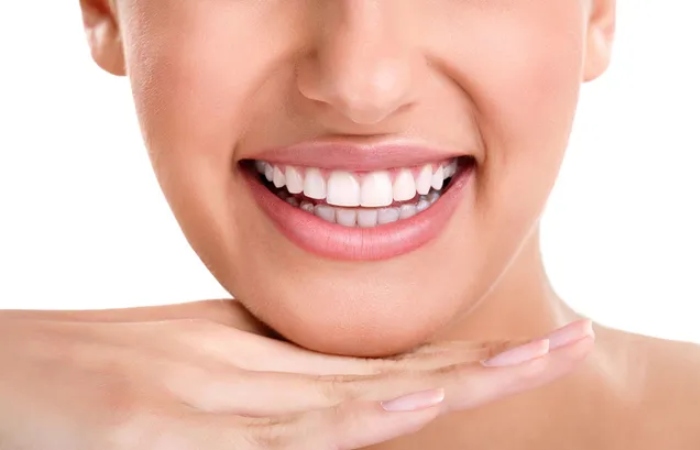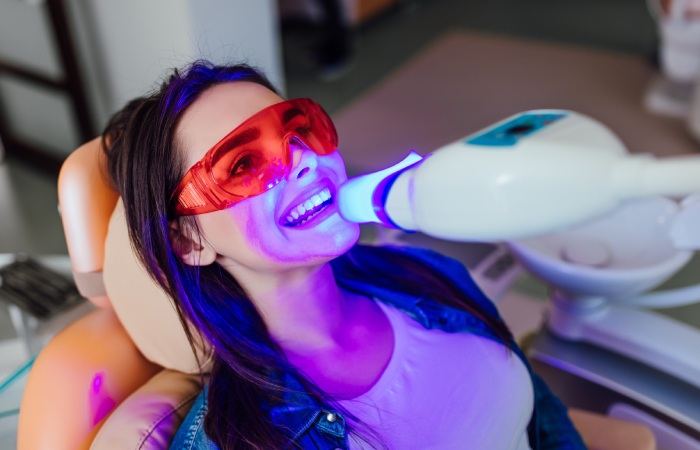The best part about this type of whitening is that you are in control, and it is tailor-made to fit you and your lifestyle. For example, if you don’t want to wear Naturally Whiten trays all the time, there are daytime solutions that can only be used for 45 minutes twice a day.
If you do not want to undergo the whitening process during the day, you can use the gel at night, which should be used for at least 5-6 hours continuously.
The process involves making soft, comfortable “whitening trays” that are custom-made and easy to use. They adapt well to your teeth. A small amount (pea size or less) of detergent is gently placed inside the containers.
Dentists generally recommend returning to the office after several uses of whitening trays. This ensures that your whitening will go well and that there will be no problems. When you come in for this appointment, the dentist will be able to see how much brighter your teeth have become than when you started.
How prolonged is the teeth whitening treatment?

This is determined by the amount of whitening desired and the unique colour of your teeth. If your teeth are quite dark or very yellowish/greyish/tetracycline, it will take a little longer.
Total whitening time is usually determined by the product and type of whitening gel your dentist recommends. Don’t forget your situation. Some products only require quick use, while others require daytime use.
In general, the darker your teeth are, the longer it will take to lighten them with a whitening gel. Tetracycline-marked teeth may take six months to a year to whiten.
It is important to know that different techniques are suitable for various types of stains, and there is no definitive rule on the duration of treatment. We recommend you discuss your concerns with your dentist.
How safe is Teeth Whitening (Naturally Whiten)

Many dentists believe that it is not true that teeth whitening damages teeth. It is also not true that yellow teeth are healthier than pearly white teeth. Teeth whitening is a safe, non-invasive process that does not harm a person’s oral or overall well-being when performed by a dental professional.
The only people who should avoid using whitening substances are pregnant and breastfeeding women, people with known allergic reactions, or children under 16 years of age.
The most common consequences may be tooth sensitivity or burning gums, which tend to be very short-lived. That’s why it’s important always to perform teeth whitening under the management of a dental expert, not a tanning salon or hair salon.
In rare cases, current invisible oral infections can be activated by the whitening gel penetrating the tooth superficial.
What do I do if I have any sensitivity during tooth whitening?

However, many people have naturally delicate teeth.
Sensitivity to new, white teeth is the most common complication of teeth whitening with missing or very rare enamel.
This usually occurs around the neck of the tooth, where the gums may recede.
If you feel slight pain, you should stop whitening and seek help. If you are concerned, seek expert advice.
What occurs if the teeth do not lighten up evenly (Naturally Whiten)

Throughout the first whitening, you may notice the appearance of new shiny areas on your teeth. Don’t worry. These bright areas were initially present but were not visible to the naked eye. As your teeth begin to lighten, they become more visible because these bright areas also whiten.
As the entire tooth lightens, these darker spots become smaller and, therefore, appear less recognizable. Sometimes, your dentist can perform a special process called microabrasion that helps remove shiny areas more completely.
Some people’s teeth may appear as bands with lighter/whiter areas. Again, these companies were initially in the pearly white teeth business. As your fangs whiten, the whitest parts of the tooth will shrink first, followed by the deeper areas. After about a week, they will no longer be recognizable.

